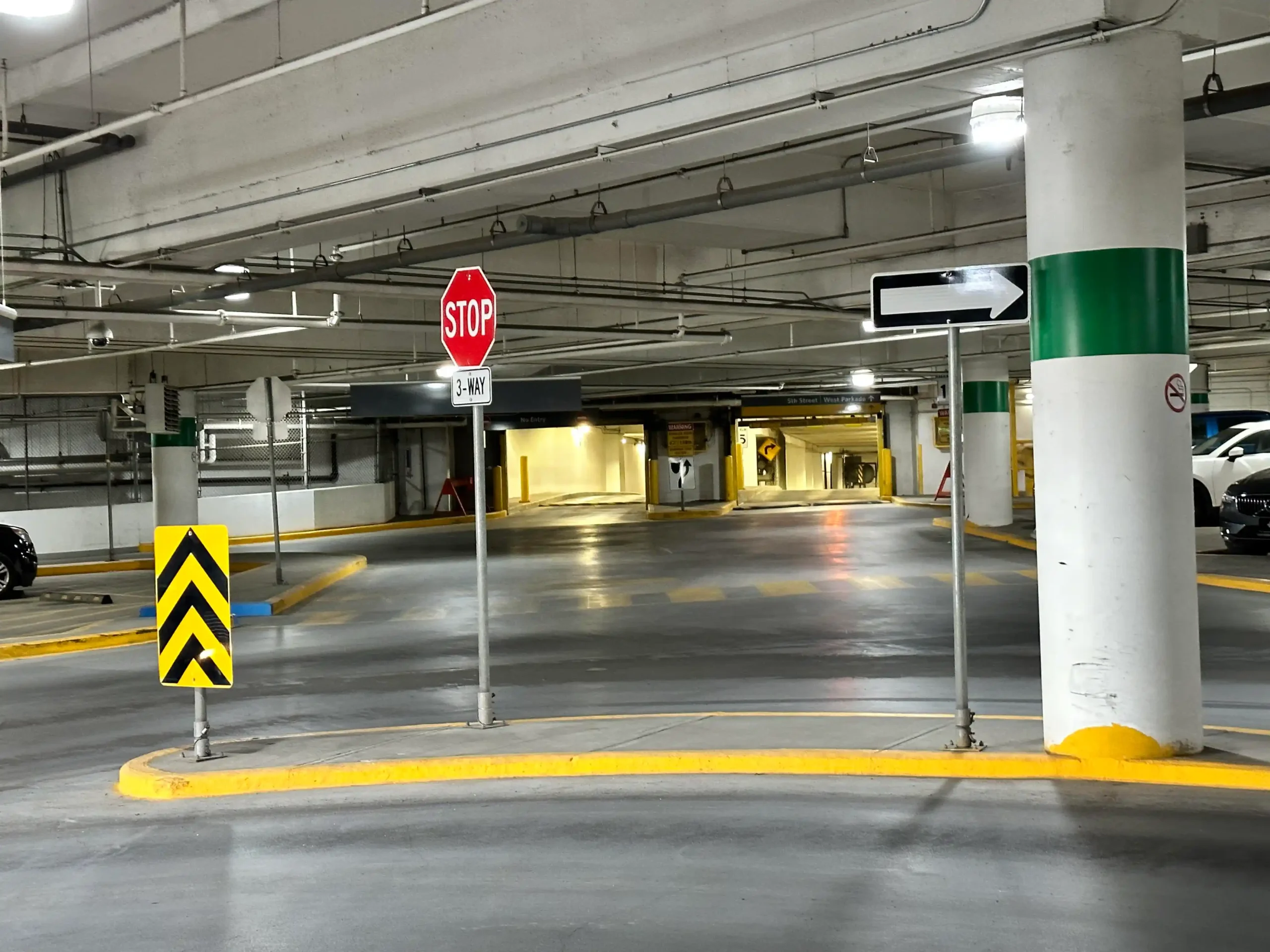There’s nothing quite like a January morning in Edmonton: sky still pale, air sharp enough to bite, wind chiselling at your resolve. Out on the curb, drivers scrape and pray; down in a warm, dry parkade, you just… go. Heated underground parking isn’t a splurge—it’s the quiet upgrade that makes every winter day simpler, safer, and surprisingly cheaper when you add it all up.
-
Time: no scraping, no warming, no digging out—just drive.
-
Safety: clear visibility, unfrozen brakes/locks/doors, better traction sooner.
-
Reliability: happier batteries and fluids; fewer “won’t start” mornings.
-
Comfort: step into a warm cabin—gloves off, attitude up.
-
Savings: less idling fuel, fewer car washes, fewer chips and cracks, fewer tickets/tows.
What “heated underground” actually does for you
Starts are easy. A warmer ambient temperature keeps your battery, oil, and wiper fluid closer to optimal. You’re not fighting thick oil or a deeply discharged battery, and your windshield de-ices faster.
Visibility is instant. No morning scrape-marathon—your windshield is clear, mirrors unfrozen, wipers flexible, and the cabin is toasty by the time you hit the ramp.
The car ages slower. Less salt splash, less freeze–thaw stress on rubber seals and plastics, fewer paint chips from slush and sand. You’ll notice it when you wash the car (and when you sell it).
Your routine stays calm. Late-night returns from the ICE District? Early shift? Groceries in a deep freeze? Underground means dry floors, bright lights, and zero wind-chill.
The simple math: does it “pay for itself”?
Let’s turn comfort into numbers. Suppose an underground stall costs a monthly premium compared to street/surface parking. Add up what you save:
-
Time saved: scraping + warming + digging out (5–15 min/day in winter months)
-
Fuel/idling: remote-start minutes you no longer burn
-
Car wash: less slush & salt = fewer paid washes
-
Maintenance: fewer dead-battery calls, less cold-start stress
-
Tickets/tows: snow-route bans, expired meters, or “creative” winter parking
Example 1: Downtown commuter (conservative)
-
10 min/day saved × $20/hr × 22 workdays ≈ $73
-
Idling fuel avoided (say 6–8 mins/day): $15–$25
-
Car washes (-2/month): $24–$40
-
Battery/maintenance smoothing (amortized): $10
-
Ticket/tow risk reduction (amortized): $10
Estimated total value: $132–$158/month
If your stall premium is in that range, it’s a wash or better—plus you get daily comfort and reliability.
Example 2: Shift worker / student musician (gear, late nights)
-
15 min/day saved × $20/hr × 22 days ≈ $110
-
Idling fuel avoided: $25–$35
-
Car washes (-3/month): $36–$60
-
Battery/maintenance amortized: $10–$15
-
Ticket/tow risk reduction: $15–$20
Estimated total value: $196–$240/month
Here the numbers tilt clearly toward underground.
These are illustrative ranges—adjust to your time value, commute days, and winter habits. The point: once you quantify time, the “luxury” starts looking like a smart purchase.
Safety & reliability you can feel
-
Full visibility immediately. No “I’ll finish scraping at the red light.”
-
No frozen doors or locks. Rubber seals stay supple; you’re not yanking on handles.
-
Braking & traction stabilise faster. Warmer components reach optimal performance sooner.
-
Personal safety: Brightly lit, controlled access beats hunting curb space on dark, windy nights.
Cleaner car, cleaner building
Salt, grit, and slush live outside. Underground, your wheel wells dry, mats stay cleaner, and you track less mess into elevators and hallways. You’ll wash less and vacuum less—time back, money saved.
EV owners: range and comfort perks
Heated parking helps precondition the cabin/battery with less energy loss, protects charging cables from wind-chill wrestling, and keeps connectors clean. If the building offers Level 2 charging, you arrive and plug in without braving the elements.
Who benefits most?
-
Early-morning workers and late-night event-goers
-
Students/pros with laptops, instruments, or studio gear
-
Parents wrangling strollers and groceries in the cold
-
EV owners (preconditioning + charging ease)
-
Anyone who values punctual, low-stress mornings
Tips to get every dollar of value
-
Keep a snow brush in the car anyway (storms happen during the day).
-
Rubber mats + trunk liner: protect from boots and grocery melt.
-
Block-heater cable (if you still park outside sometimes).
-
Tire pressure: check monthly—temperature swings matter.
-
Mind the rules: stall size, height clearance, visitor policy, and whether storage is permitted (often no loose items).
-
Ask about extras: bike rooms, car-wash bays, EV charging, camera coverage.
FAQs
Is heated underground parking worth it if I barely drive?
If you drive only on weekends, calculate your time saved per trip and layer in comfort and ticket/tow risk. Many light drivers still choose underground for peace of mind and clean storage.
Do I still need winter tires and a block heater?
Yes. Underground helps, but winter tires and good maintenance are non-negotiable in Edmonton.
What if I sometimes street-park to save money?
Mix-and-match works—keep the stall for overnights and storm days, use street parking for quick errands when rules allow.
Can I store tires or a rack in my stall?
Buildings vary. Many forbid loose storage for fire safety. Ask about lockers or seasonal storage.

